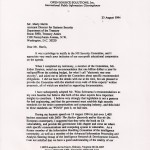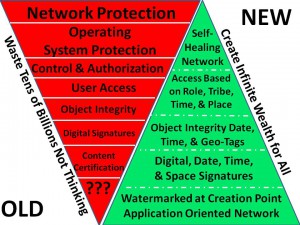
By Brian Krebs
July 29, 2009; 3:15 PM ET
The Washington Post
Imagine simply visiting a Web forum and finding that doing so forced your browser to post an embarrassing Twitter message to all of your contacts, or caused you to admit a stranger to your online social network. Now consider the same dynamic being used to move money out of your online auction account or delete the contents of your e-mail inbox.
. . . . . . .
The problem with the token-based security approach, as researchers prior to Hamiel and Moyer have noted, is that it works only if the attacker doesn't have access to that random string of data as well.
To take the Alice and Bob on the forum example a step further, consider what happens when Alice views a forum posting by Bob that includes a link to an off-site image hosted at a site controlled by Bob. That image, when loaded by Alice's browser, will automatically send Bob's site a referrer URL that includes the full token that is unique to Alice's browser session with that forum. Armed with the referring URL's token, Bob can then respond to the image request from Alice's browser with a request to silently take action on that forum in Alice's name.
. . . . . . .
Moyer said one way to prevent this attack is commonly used on banking Web sites involves what's known as a nonce, which is essentially a random, one-time-use-only number that is appended to a URL each time a visitor loads a page on that site. He noted that one reason most sites don't adopt this approach is that it requires far more computational and Web server capacity, which can drive up costs — particularly for high-traffic sites.

+++++++Phi Beta Iota Editorial Comment+++++++
In 1990-1991 Winn Schwartau testified to Congress. They ignored him the way they ignored Peak Oil testimony in 1974-1975. In 1995 Robert Steele organized three top experts, Schwartau, Jim A from NSA, and Bill Caelii, and submitted a cross-walk of crystal clear recommendations adding up to $1 billion a year to Marty Harris, responsible for the security of the National Information Infrastructure (NII). Today the US Government is about to waste $12 billion a year helping NSA further its own agenda while ignoring the root needs of the American people for trusted electromagnetic services. The federal government is so busy attacking other people it is neglecting the people that created the federal government as a service of common concern. The gap between those exercising public power and those who elected them and pay them has grown cataclysmic. Public intelligence in the public interest is one way to help the Republic heal.



